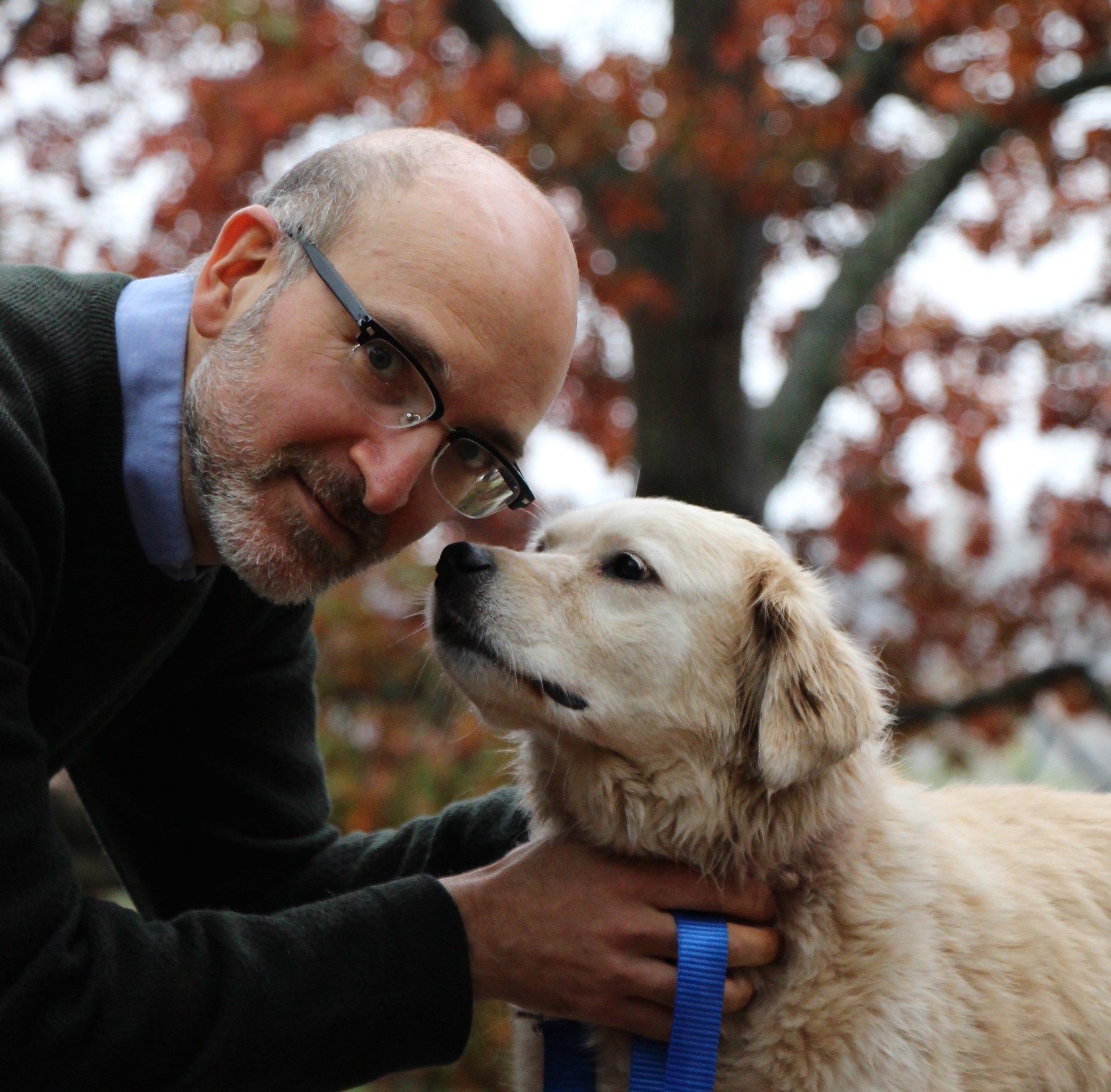Q&A
Dr. Daniel Promislow on the NIH-supported Dog Aging Project

Excerpts from our conversation with Dr. Daniel Promislow, an expert on the biology of aging at the University of Washington.
NIHNiH: Why are you studying pet dogs to learn about aging?
Promislow: We can learn a lot about humans from dogs. Dogs get many of the same diseases that we do. And they live in our environment. But because their life is so sped up compared to ours, we can learn things so much more quickly.
We all live in environments that have risks, such as chemicals. It’s often hard to identify those risks and understand how they work, because people live so long. And it’s hard to follow people for 30 or 40 years. There are studies like the Framingham Heart Study or the Baltimore Longitudinal Study on Aging that have been following people for 50 years or more. But that’s difficult.
Our recent paper looks at how the environment is associated with health outcomes. It suggests that the dog is going to be a really good model for understanding humans. This could be just the beginning of the kinds of studies that we can do that will inform our understanding of how social adversity impacts human health. Because everything is sped up in dogs, we can see the impacts of their early life experience on later life and health much more quickly.
NIHNiH: How are pet owners involved in the study?
Promislow: People love dogs. And they want to share the stories about their dogs’ health and health challenges. An important part of the Dog Aging Project is this community science aspect, where we are engaging with dog owners. They are sharing data with us. We are sharing our results with them. It’s very much a partnership with this community of tens of thousands of dog owners. So far about 45,000 people have told their stories to us.
We’re capturing Having to do with genes, the stretches of DNA you inherit from your parents. Genes define characteristics, like how likely you are to get certain diseases. genetic information. In addition, we have information about environmental variation that we collect from the owner. So we know things about the neighborhood, including green space in the neighborhood, the climate, temperature, rainfall, that sort of thing. And we collect information about diet.
We work closely with some pet owners to collect biospecimens, such as blood, hair, fecal samples, and urine. We analyze those samples so we can identify the genetic and environmental factors that shape aging and age-related traits. And we look at the molecular mechanisms by which genes and the environment shape health. A subset of dogs will get a cheek swab for whole-The entire set of genetic instructions in your body. genome sequencing. So far, we’ve sequenced the genomes of 7,000 dogs.
NIHNiH: Why is it helpful to study dogs over time?
Promislow: All participants are invited to complete an updated survey every year. So as we track these dogs over time, we’ll be able to test different ideas, looking at whether environmental or behavioral traits measured at one time are associated with disease risk later in life, suggesting a causal relationship.
Our first papers to date have been what we call “cross sectional.” They are just taking a snapshot in time of all the dogs that have signed up. We’re not yet doing the longitudinal analysis, which means following the dogs over time. So we have seen some very interesting patterns. But an important cautionary note is that we don’t know what is causing what yet.
NIHNiH: And are there any particular kinds of dogs you’d like to enroll?
Promislow: We want all dogs because that variety is power for us. The more dogs we have, the better.
We’d really love to have more puppies, because we want to know how early life experience shapes aging. It’s also an important question in human populations, and it’s very hard to answer. If we enroll puppies, we can follow those dogs for their whole lives.
I'll also mention that we have a special website that’s called the Dog Park. Participants in our study can go to that website and interact with each other online. It’s the Dog Aging Project’s participant community.
NIH Office of Communications and Public Liaison
Building 31, Room 5B52
Bethesda, MD 20892-2094
nihnewsinhealth@od.nih.gov
Tel: 301-451-8224
Editor:
Harrison Wein, Ph.D.
Managing Editor:
Tianna Hicklin, Ph.D.
Illustrator:
Alan Defibaugh
Attention Editors: Reprint our articles and illustrations in your own publication. Our material is not copyrighted. Please acknowledge NIH News in Health as the source and send us a copy.
For more consumer health news and information, visit health.nih.gov.
For wellness toolkits, visit www.nih.gov/wellnesstoolkits.
